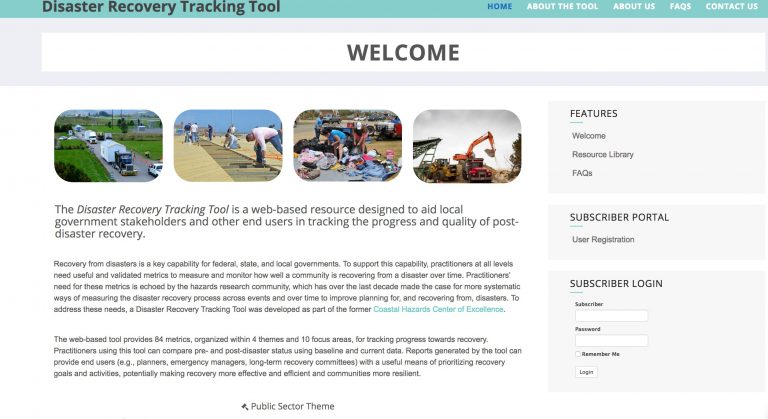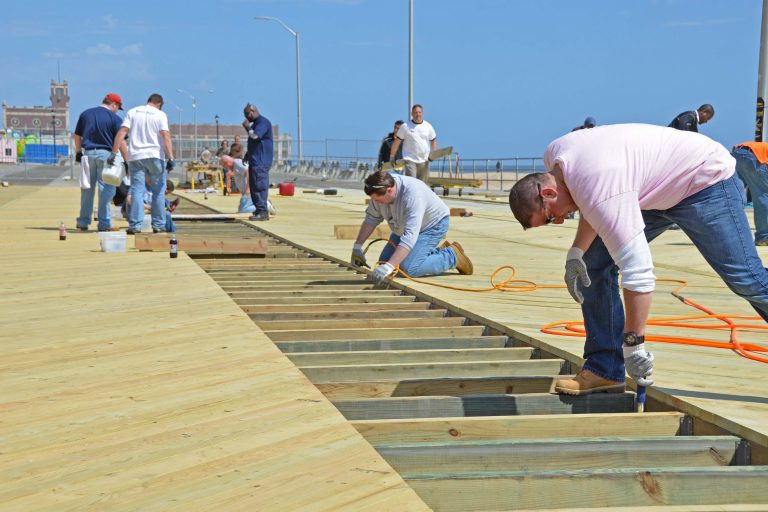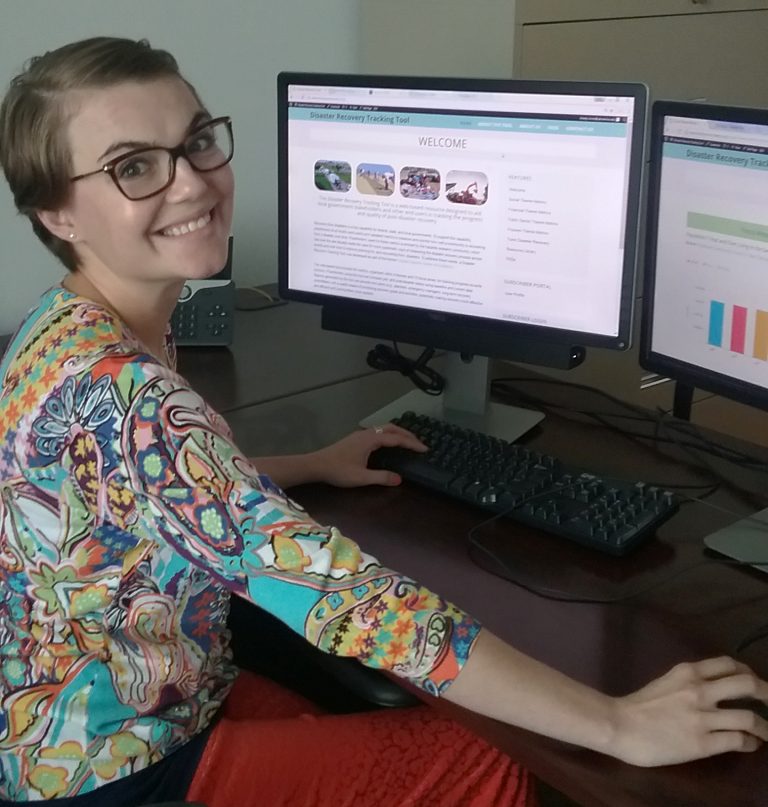Dr. Jennifer Horney believes that the quality of disaster recovery can be markedly improved with a well-designed, comprehensive and holistic pre-disaster recovery plan.

Dr. Horney, of Texas A&M University, is the Principal Investigator on the Coastal Resilience Center project “Implementing the Disaster Recovery Tracking Tool.”
Dr. Horney and research associate Katie Kirsch collect long-term data on 84 metrics of recovery. Tools are needed that can measure recovery at the local, regional and state levels to lead to best practices being adopted, Horney said. Valid and reliable measures of community disaster recovery – both those measured numerically and those impacting quality of life – are needed in order to be able to track recovery in different geographic locations, from different types of disasters and over time.
Through the Disaster Recovery Tracking Tool, an online database of these metrics, end-users can track the progress and quality of post-disaster recovery. The Tool, at trackyourrecovery.org, uses baseline metrics for a community and allows for updates during the post-disaster period to provide context for changes over time. Two pilot communities will be involved with the project to demonstrate the abilities of the Tool, and lessons learned from that work will be incorporated into marketing materials, a training module and a user guide for additional end-users.
This school year, Dr. Horney is working with students from the Texas A&M Mays Business School to improve the user experience and develop a marketing plan to encourage use of the website. Changes will include adding short video guides explaining the various functions available on the website.
The previous iteration of the Tool had 50 registered users; the goal under the current project is to have 250 communities using the site to determine what other adjustments are needed. Long-term, the goal is to provide a resource that can be leveraged to enhance the management and quality of disaster recovery at the local-level in cities and counties throughout the United States.

How recovery tracking works
Without monitoring recovery and comparing post-recovery status with pre-disaster benchmarks, it is difficult for communities to assess whether or not they are achieving a quality recovery, improving disaster resilience or building back better, Dr. Horney said.
“We are now conducting a pilot study with Liberty County, Tex., to determine what additional improvements can be made to enhance the usability and utility of the website,” Dr. Horney said.
The project team plans to test the metrics in areas of North Carolina impacted by Hurricane Matthew, noting that it’s crucial in the early stages of disaster recovery to have a comprehensive understanding of a disaster’s impact and their community’s needs.
“This knowledge can then be applied in the creation of informed strategies and the identification of vulnerable populations within the community,” Dr. Horney said. “Data-driven policies and decision-making in the aftermath of a disaster is key in building trust in local government.”

The Tool’s 84 metrics are organized within four themes (financial, process, public sector and social) and 10 focus areas based on the Federal Emergency Management Agency’s Recovery Support Functions. These metrics are composed of both user-entered data (49 of the 84 metrics) and 35 data points that are automatically populated from publically available sources (for example, the American Community Survey, County Business Patterns, Disaster Declarations Summaries) across multiple years. Practitioners using this tool can compare pre- and post-disaster status using baseline and current data.
The metrics were identified and validated through a literature review, recovery plan review, case studies, focus groups, key informant interviews and pilot tests with communities impacted by Hurricane Sandy in 2012. Reports generated by the tool can provide end-users (planners, emergency managers and long-term recovery committees, among others) with a useful means of prioritizing recovery goals and activities, potentially making recovery more effective and efficient and communities more resilient.
The new website also features additional tracking functions that allow end-users to monitor resource inventories; public assistance and grants and expenditures; and local contacts that would be needed in a disaster event, such as members of a Long Term Recovery Committee. In an effort to encourage pre-disaster recovery plan development, the website offers links to key planning documents, guidelines and existing city, county and state recovery plans that can be used as templates.
Building on previous success

Developed as part of the former Coastal Hazards Center of Excellence, the Disaster Recovery Tracking Tool was created to provide a free, secure, web-based disaster recovery management platform to local governments and decision-makers. The Tool enables end-users to maintain accessible records of public outreach activities and meetings, store and readily access essential contact information for community organizations and other stakeholders, log, prioritize and track the progress of recovery-oriented tasks, and capture resource inventories and expenditures for grant eligibility and reporting.
The current project applies that research by providing a usable tool to track those metrics, as well as helping with required reporting and development of a high-quality disaster recovery plan that can improve resilience to future events.
“It’s our belief that, given the appropriate resources and guidance, local stakeholders, elected officials, and planners are capable of developing plans, strategies and capacity-building initiatives that are conducive to resilience,” Dr. Horney said. “We have actively engaged end-users using key informant interviews, case studies and surveys to ascertain their current needs and preferences in regards to disaster recovery planning and tracking. We value the unique insights provided by these community leaders and will continue our efforts to tailor the website’s offerings in response to consumer feedback and recommendations.”
Although the process of planning for recovery can seem daunting and time-consuming to resource-limited local governments, pre-disaster planning provides the opportunity to obtain feedback from community members.
“Engagement is vital for direction-setting, prioritization of strategies, and consensus-building that is oriented to and representative of the community itself,” Dr. Horney said.
